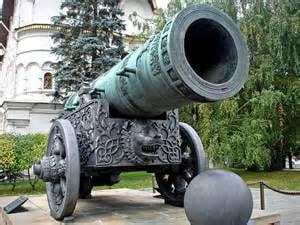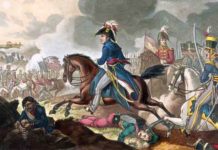
Humpty Dumpty sat on the wall,
Humpty Dumpty had a great fall;
All the king’s horses and all the king’s men
Couldn’t put Humpty together again.
The real Humpty Dumpty was a powerful cannon used by the Royalist forces during the English Civil War of 1642 to 1651. Sir Charles Lucas and Sir George Lisle led the king’s men and overpowered the Parliament stronghold of Colchester early in 1648.
They grimly held on to it while the Parliamentarians, led by Thomas Fairfax, encircled and besieged the town in what became known as the Siege of Colchester. The supporters of Charles I almost won the day – all thanks to his doughtiest defender, Humpty Dumpty.

In pole position, as it were, on top of the church tower of St Mary-at-the-Walls, One-Eyed Thompson, the gunner, managed to blast away the attacking Roundhead troops with rousing success for eleven whole weeks.
That is, until the top of the church tower was eventually blown away, sending Humpty Dumpty crashing to the ground outside the city wall, where it buried itself in deep marshland.
The king’s cavalry (the horses) and the infantry (the men) hurried to retrieve the cannon in order to repair it, but they couldn’t put Humpty together again and without their weapon of mass destruction they were soon overrun by Fairfax and his soldiers.
There are another two verses preceding the better-known one that tell the tale in more detail:
In sixteen hundred and forty-eight,
When England suffered the pains of state,
The Roundheads laid siege to Colchester town
Where the king’s men still fought for the crown.
There One-Eyed Thompson stood on the wall,
A gunner of deadliest aim of all.
From St Mary’s Tower his cannon he fired,
Humpty Dumpty was its name.
Written in the same vein as ‘Hitler has only Got One Ball’ (a mocking song that raised the British spirits during the darker days of the Second World War), ‘Humpty Dumpty’ was a piece of propaganda that passed from town to town as the news of the king’s defeat spread across England and the Parliamentarian troops slowly returned home, teaching even their youngest children to recite the tale of their victory.
Sir John Tenniel’s iconic illustration shows Alice in deep discussion with Humpty Dumpty as he sits upon a high wall. Tenniel, clearly taken with the idea of the impossibility of Humpty Dumpty’s being put back together again once he’d fallen off the wall, has him shaped as an egg with short arms and legs.
This is the first known depiction of Humpty as an egg, one that was to become the definitive image. – Albert Jack
Albert Jack AUDIOBOOKS available for download here

Pop Goes the Weasel – Nursery Rhyme History




































